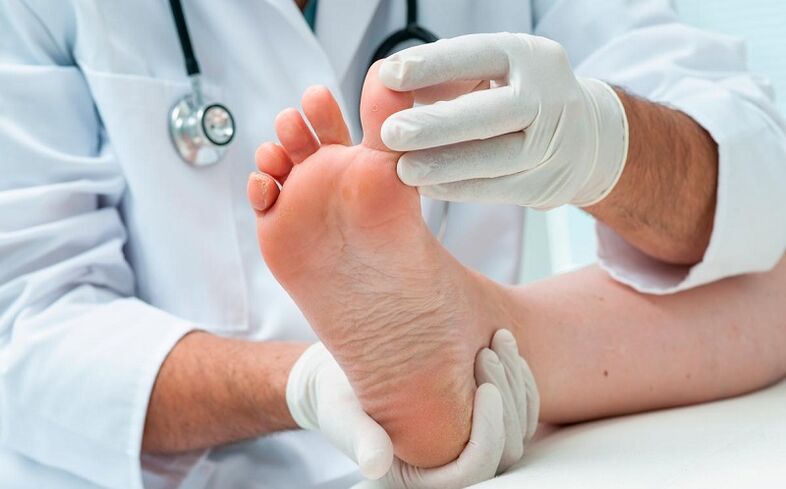Many people change their channel when they see ads for antifungal drugs on TV and think, "This is not for me, I will never be a fungus! "is difficult.

Sometimes they don't go to a dermatologist in time for a fungal infection of the foot because they don't believe it exists. "It's not a mushroom, my friend had a mushroom and it doesn't look like it, " some argue. In fact, the symptoms of this infection may be different, and if you feel any discomfort in the foot, consult a doctor immediately. He will perform tests and only then will make a diagnosis.
Or maybe you don't pay attention to itching, peeling, changes in the condition of the nails? In the end, this is not a disease of the internal organs and does not threaten anything terrible. And it's a shame to go to the doctor, he suddenly thinks it's a kind of gum. And this idea is widespread among the population. And such an attitude towards one's own health can be called irresponsible. After all, it is easier to treat the fungus at an early stage, otherwise the disease will either disappear or worsen again. And most importantly, your family members can be infected with the fungus. Therefore, there can be no two opinions on this issue. Be treated, period!
How and where are fungi infected?
Mushrooms can wait anywhere we go barefoot: on the beach, in the pool, in the bathroom and even in an ordinary apartment. In general, this infection can affect any part of the skin, but the feet are affected by several factors at most. These include constant wearing of shoes made of poor quality materials, increased sweating of the feet, and more frequent contact with surfaces where the fungus can live. Mycelium spreads very quickly under the skin, causing itching and other discomforts.
Let's take a closer look at the ways of infection.
- The fungus can be spread from person to person when using the same shoes (eg, slippers), socks, a towel, and from sexual partners who go to bed.
- In public pools, baths, saunas, barefoot beaches. A humid environment for a fungus is an ideal condition for reproduction. Slates or shoe covers can protect you from infection.
- If the tools in the manicure and pedicure room are not sterilized well enough or just use someone else's tools at home. It is best to visit a radical manicurist who does not overdo it and use personal tools at home and treat them with alcohol every time.
Strengthening the immune system will help reduce risk factors, but no one has abolished the rules of personal hygiene. It is important to trust the doctors to treat the fungus and not to use folk recipes.
How to recognize foot fungus?
Many infections are suitable for the concept of fungi, their manifestations may be different. But there are a number of symptoms that are common to most.
First of all, don't itch. It is weak at first, but over time it becomes stronger, especially at night. Consistently, foot baths with sage and other herbs provide temporary relief, but the fungus does not go away and causes itching and burning.
Nails get an unrecognizable look. They turn yellow and dark, the color can be heterogeneous, break, erode, the surfaces are convex. The changes in the nail plate start from the outside and gradually spread to the cuticle itself.
Over time, your feet, even sandals and flip-flops, begin to sweat and produce an unbearable odor.
The skin of the feet will generally not change color or may turn slightly red and then peel off.
If you experience at least one of these symptoms, you should see a doctor. Maybe it will rule out a diagnosis of a fungus, and itching may be a common allergy. But you can learn only after passing the tests. Neglect of the disease can lead to complete breakage of the nails, constant scratching of the skin can damage it, and the infection can penetrate and cause ulcers.
How to treat athlete's foot?
Follow your doctor's instructions! Tests will show you what type of fungus you have and the treatment will depend on it. Sometimes a doctor may recommend the use of folk remedies in combination with pharmaceuticals and medical procedures. Let's take a closer look at all these methods.
- Laser treatment.During laser treatment, the beam penetrates the skin and destroys the mycelium fibers of the fungus. The number of sessions is from three to ten. Wave radiation is created by a special device. The fungus is gradually destroyed by this effect. Sometimes wave treatment can last up to three months at short intervals.
- Medical procedures.These include wave radiation therapy, skin cleansing with a medical manicure or pedicure. Medical manicures or pedicures do not provide a deep cure for the fungus, they are already used at the end of the disease to make the nails on the hands or feet look more or less normal.
- Medications.Only a doctor can prescribe this or that drug. It can be tablets, ointments, creams, lotions, varnishes.
- Folk remedies.These are dishes, infusions, oils with herbs and other parts of plants. They are used only in combination with drugs. Baths can reduce itching, improve the appearance of the skin, but do not completely get rid of the fungus. The most popular baths with oak bark or celandine, propolis tincture over alcohol, tea tree oil.
It makes sense to repeat: treating a fungus is not an easy task and you should not start without a doctor, otherwise you can deepen the disease, but remind yourself regularly.





























